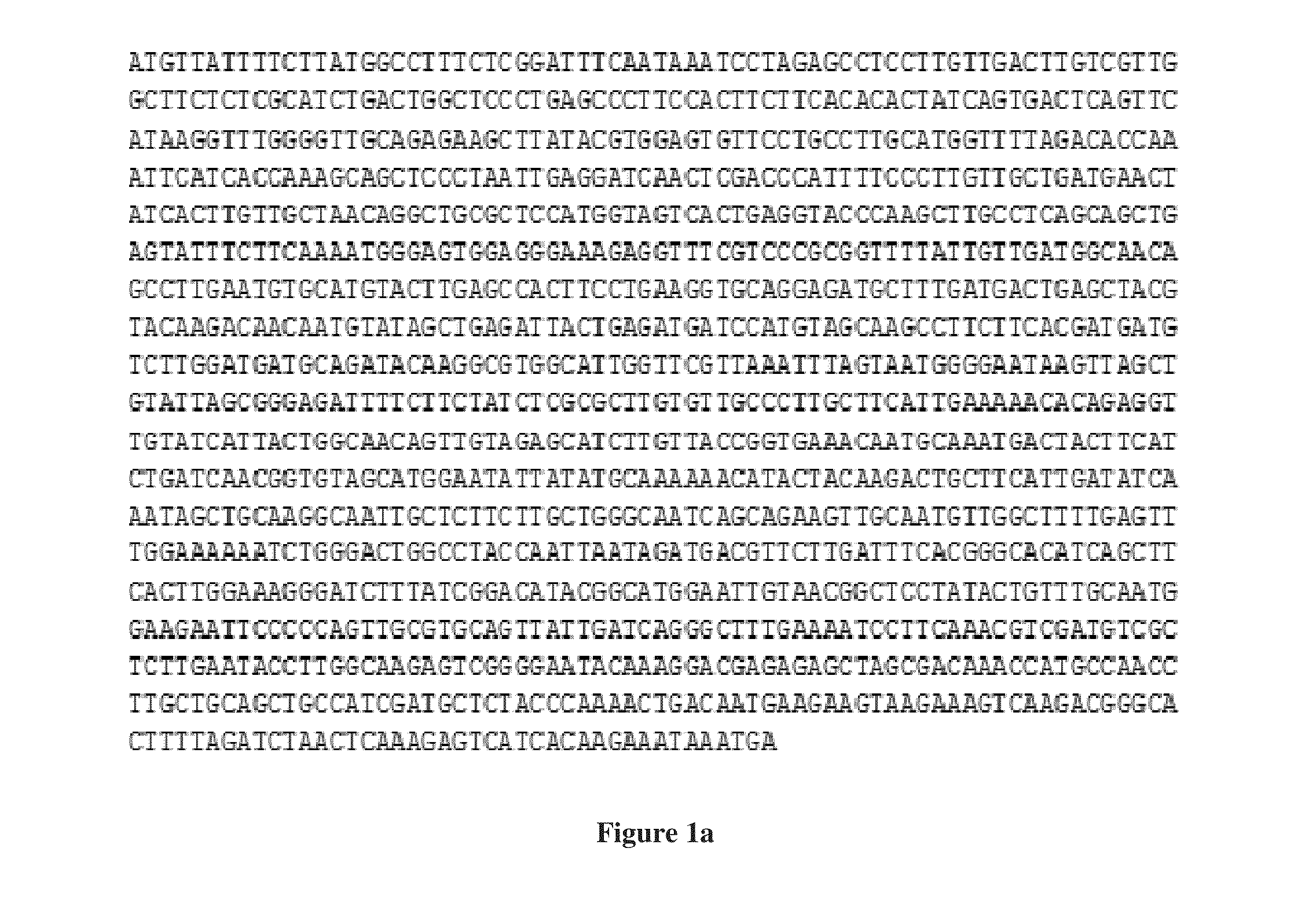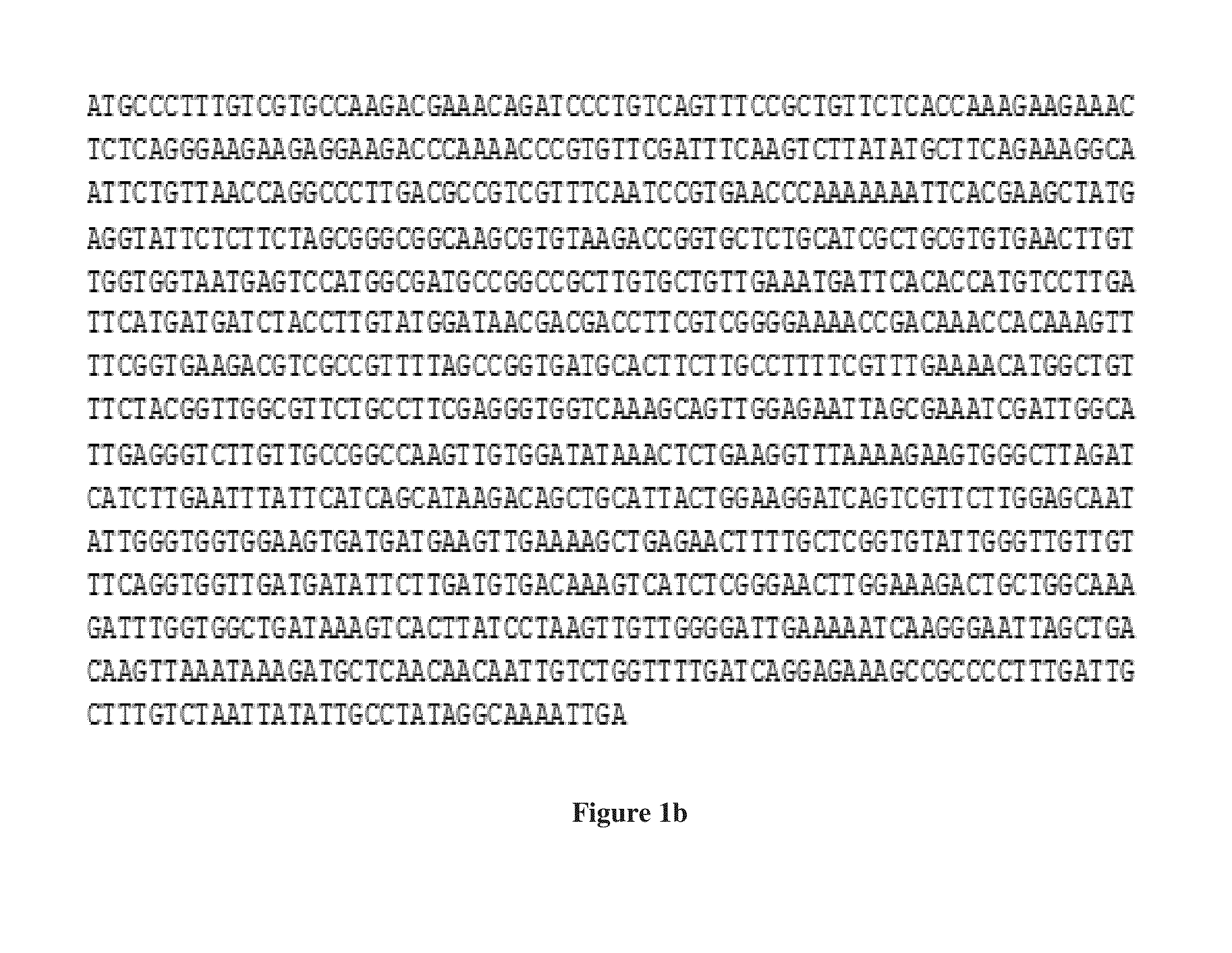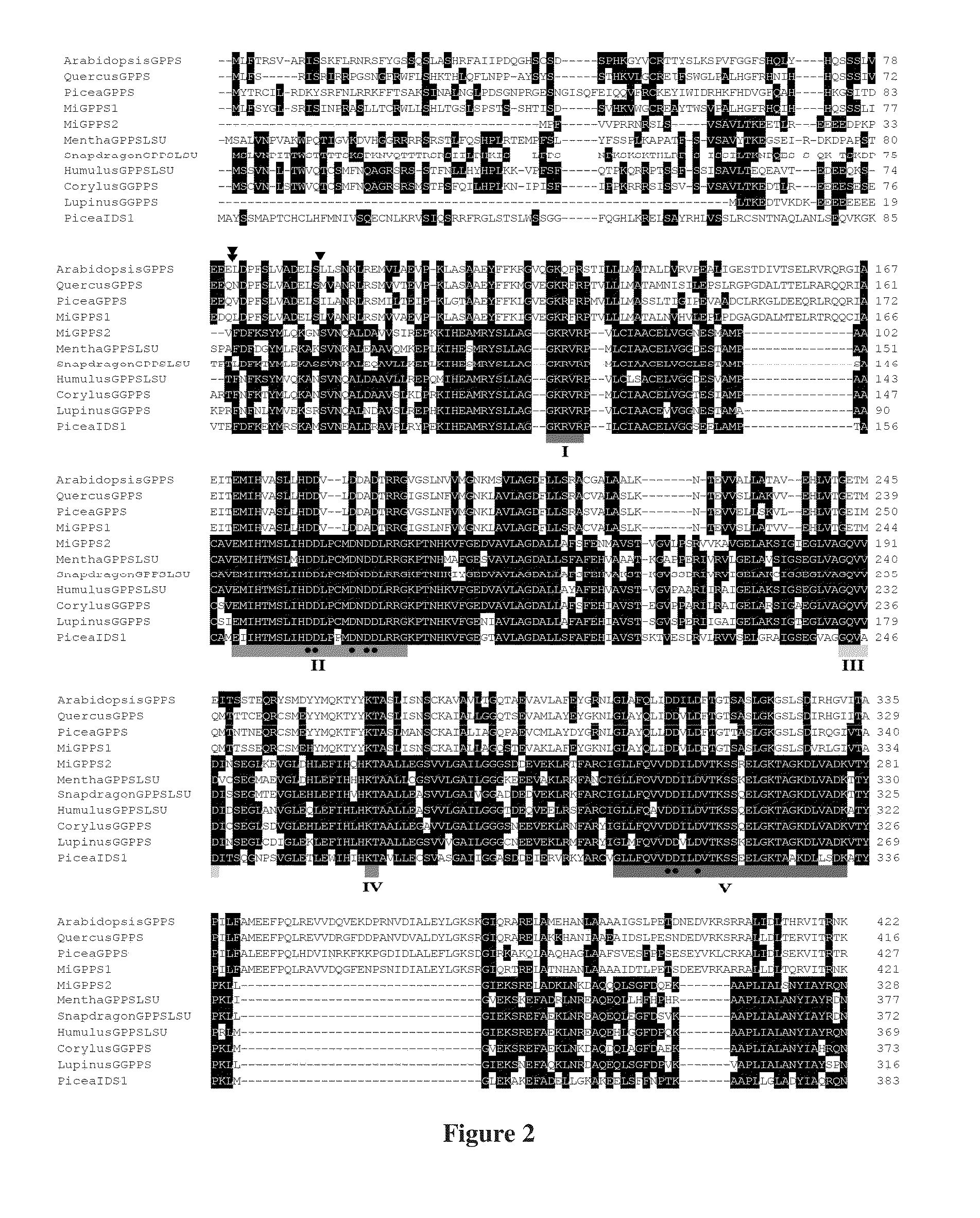Primer for amplifying geranyl pyrophosphate synthase from mango
a geranyl pyrophosphate and synthase technology, applied in the field of primer sequence for amplifying geranyl pyrophosphate synthase from mango species, can solve the problems of troublesome alphonso cultivation for farmers, and achieve the effect of improving other varieties of mango
- Summary
- Abstract
- Description
- Claims
- Application Information
AI Technical Summary
Benefits of technology
Problems solved by technology
Method used
Image
Examples
example 1
[0095]Isolation of Full-Length MiGPPS1 and MiGPPS2
[0096]Plant Material:
[0097]Mature raw fruits of mango were collected from the orchards of Konkan Krishi Vidyapeeth at Dapoli (N17°45′ E73°11′) and Deogad (N16°31′ E73°20′) and from a private orchard at Vengurle (N15°51′ E73°39′). For each of the three localities, fruits were collected from four plants. After harvesting, fruits were put in the hay, carried to the laboratory and allowed to ripe at ambient temperature. At the interval of every five days, fruits were peeled, pulp was immediately frozen in the liquid nitrogen and stored at -80° C. until use. Thus, the experimental tissues of four ripening stages: 0, 5, 10 and 15 DAH (days after harvest) were obtained from each of the three localities.
example 2
[0098]RNA isolation and cDNA Synthesis
[0099]RNA was isolated by modified CTAB method as described earlier (Pandit et al., 2007). After treating total RNA with DNase, reverse transcription was carried out over 1 μg of total RNA using Enhanced Avian RT First Strand Synthesis Kit (Sigma, St. Louis, Mo., USA).
[0100]Based on the conserved regions in the orthologous nucleotide sequences reported in the NCBI database, degenerate primers were designed for GPPS (forl: 5′-TCTTGTTACNGGTGAAACCATG-3′ and rev: 5′-TYAYTTTKTTCTTGTRATGACGC -3′) and GGPPS (for: 5′-TSGARATGATHCACACYATGTC -3′, rev1: 5′-TANGGAATRTAATTMGCYARAGC-3′, rev2: 5′-TTYCCWGCVGTTTTCCCCARTTC-3′). These primers were used for amplification of the cDNA prepared from the ripe fruits of mango. The gene specific primers for GPPS (for5′-AGATGACGTTCTTGATTTCACGGGC-3′,rev5′-CTTTGAGTTAGATCTAAAAGTGCCCG-3′) and GGPPS (for 5′-ACGACCTTCGTCGGGGAAAACCG-3′, rev 5′-GACCCTCAATGCCAATCGATTTCGC-3′) designed based on the sequence of the fragments obtained...
example 3
[0101]Phylogenetic Analysis
[0102]To understand the evolutionary relationships of MiGPPS1 and MiGPPS2 with the short chain prenyltransferases from the other plants, phylogenetic analysis was carried out using the deduced amino acid sequences of MiGPPS1, MiGPPS2 and a few functionally characterized prenyl transferases from the other organisms. Amino acid sequences of the genes were obtained from the NCBI database and used for constructing a neighbour joining tree using MEGA software (Version 5.02). The percent bootstrap values were obtained from 1000 replicates.
[0103]The analysis indicated that plant GPPS are more close to GGPPS than to FPPS which formed a clearly distinct cluster. GPPSs were scattered in four different clades and were accompanied by GGPPS in clade 1 (formed by gymnosperm GPPS and GGPPS) and clade 2 (formed by angiosperm GGPPS, GPPS-LSU and MiGGPPS (MiGPPS2)). Clade 3 contained the angiosperm and gymnosperm GPPS including MiGPPS (MiGPPS1). Clade 4, on the other hand h...
PUM
 Login to View More
Login to View More Abstract
Description
Claims
Application Information
 Login to View More
Login to View More - R&D
- Intellectual Property
- Life Sciences
- Materials
- Tech Scout
- Unparalleled Data Quality
- Higher Quality Content
- 60% Fewer Hallucinations
Browse by: Latest US Patents, China's latest patents, Technical Efficacy Thesaurus, Application Domain, Technology Topic, Popular Technical Reports.
© 2025 PatSnap. All rights reserved.Legal|Privacy policy|Modern Slavery Act Transparency Statement|Sitemap|About US| Contact US: help@patsnap.com



